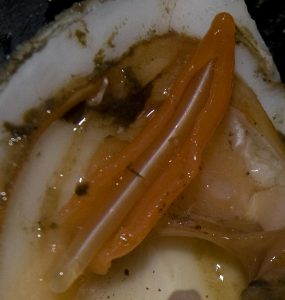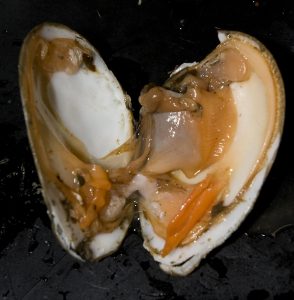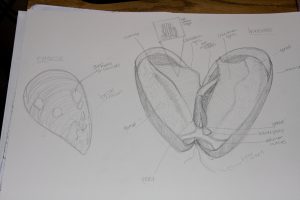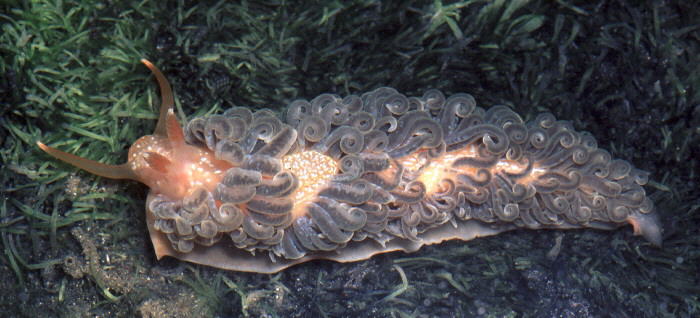Now that Jessica has stolen my thunder by doing a great job of describing the crystalline sac and crystalline style, that fabulous organ in some mollusks that spins around in the sac, I none-the-less have to acknowledge her ability as an artist. How she took an ordinary mussel that looked like this and turned it into this work of art is certainly beyond this non-artist. Meanwhile, Brit and I were busy dissecting a clam and looking at pieces under the dissecting microscope. And for those of you who have yet to read Jessica’s blog, the crystalline sac cut open with style inside looked like this on our specimen. In the first photo above it’s the orange structure in the upper left.
Now on to a new topic (as long as Emily opened it up to non-lab entries.)
It was mentioned in class how some nudibranchs feed on Cnidarians and use their nematocysts. Turns out that this may be important for biotechnological research. The Cnidarian venoms are of interest because an estimated 150 million people are exposed to jellyfish stings yearly. Preparations from nematocysts maybe useful in developing repellents to stings. The question is how to harvest these nematocysts.
Aeolid nudibranchs have evolved over millions of years resulting in a lean mean Cnidarian eating machine. Once eaten, the undischarged nematocysts are divided and sent in one of two directions. Some nematocysts go to the tips of the cerata by a process called foreign organellar retention where they serve a defensive mechanism. The majority of the nematocysts are discharged in the nudibranchs’ feces. Current research is developing processes to harvest the nematocysts from the nudibranch feces. In the study, an average of 150,000 active nematocysts were excreted per day. Using this process and using the nudibranch Spurilla neapolitana, it provided direct access to the entire range of venoms from four species of Cnidarians. The authors concluded that their methods would help advance the research on the use of Cnidarian venoms as a source of marine natural products.
The above information was from the article Active Nematocyst Isolation Via Nudibranchs by Ami Schlesinger, et.al., Marine Biotechnology (2009),11:441-444.
Can you imagine spending your day harvesting feces from the above Spurilla neapolitana and removing the 150,000 nematocysts? Welcome to biotech research.
Enjoy that thought,
Phil






